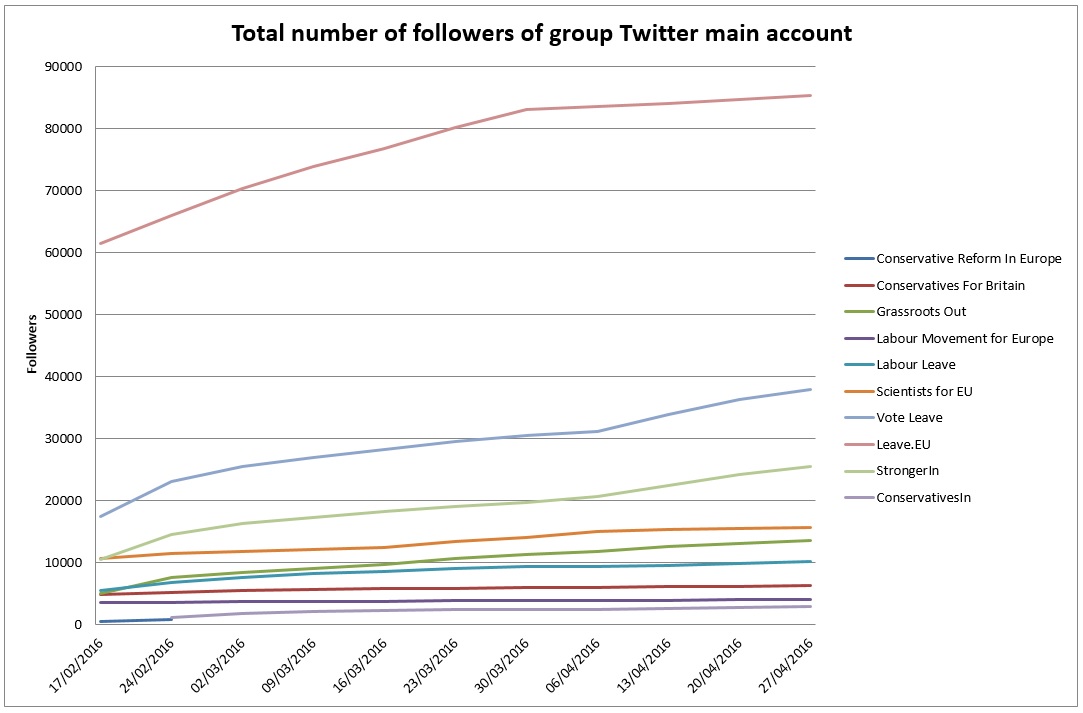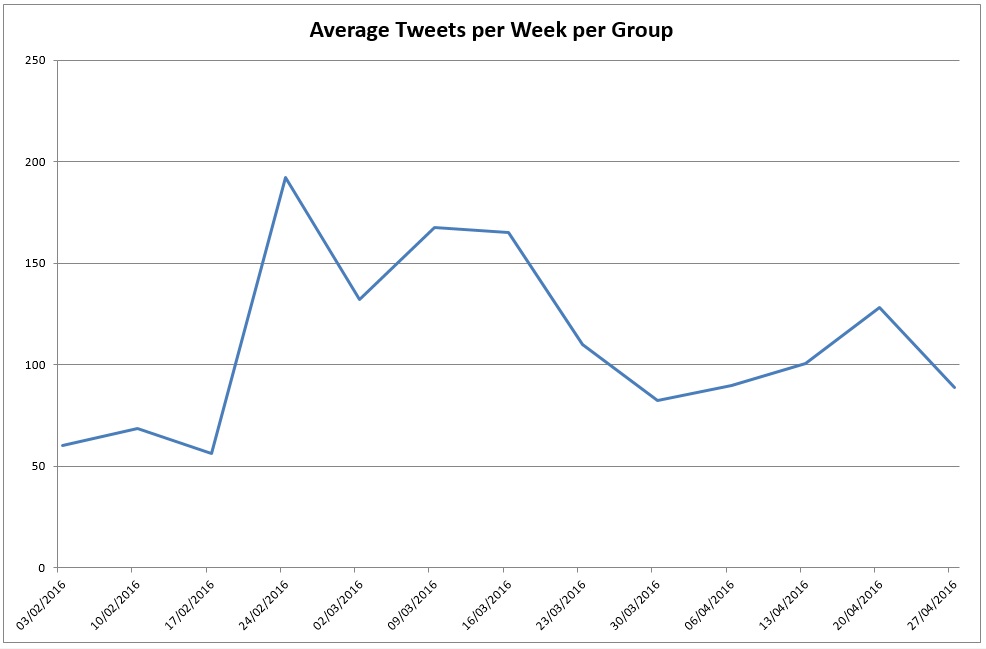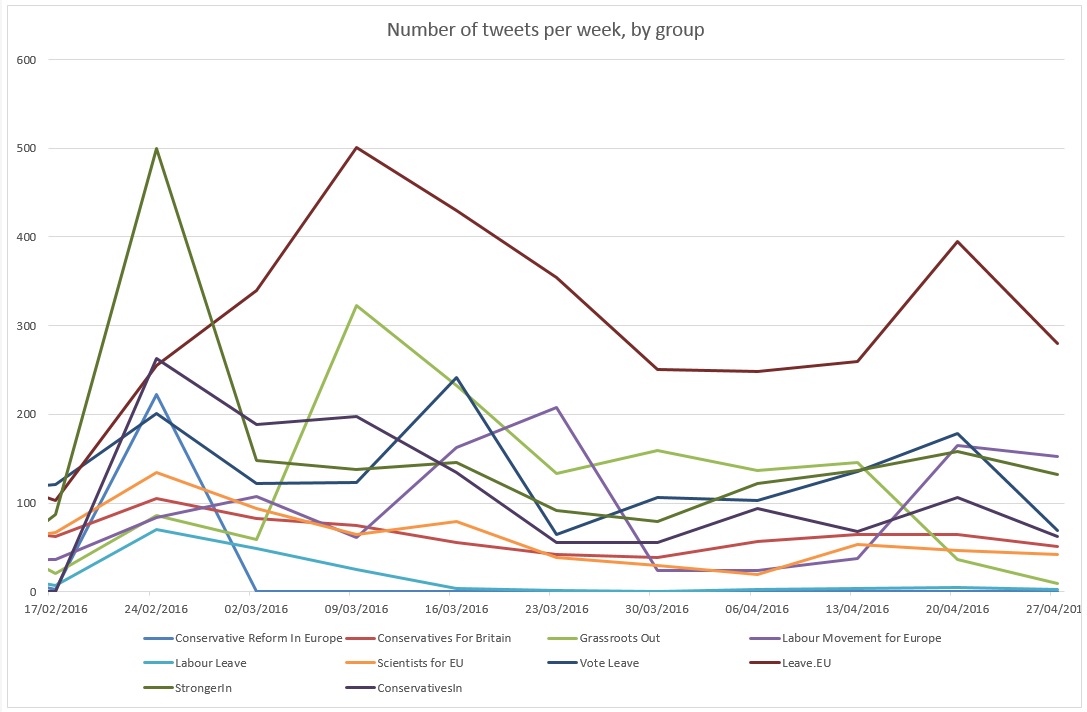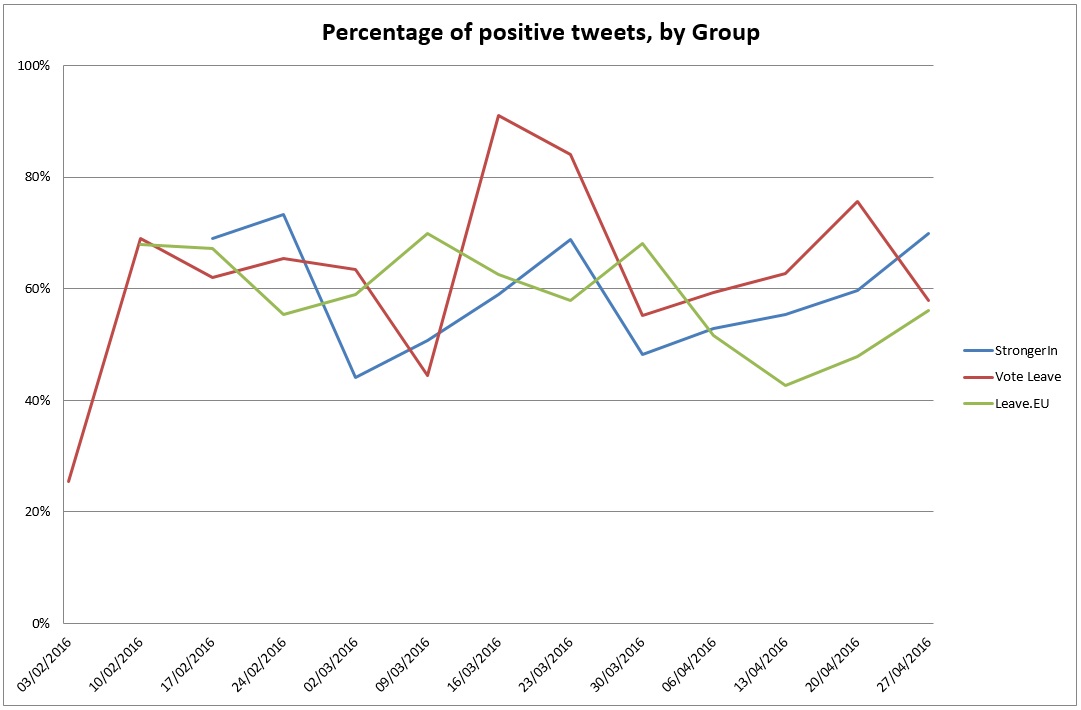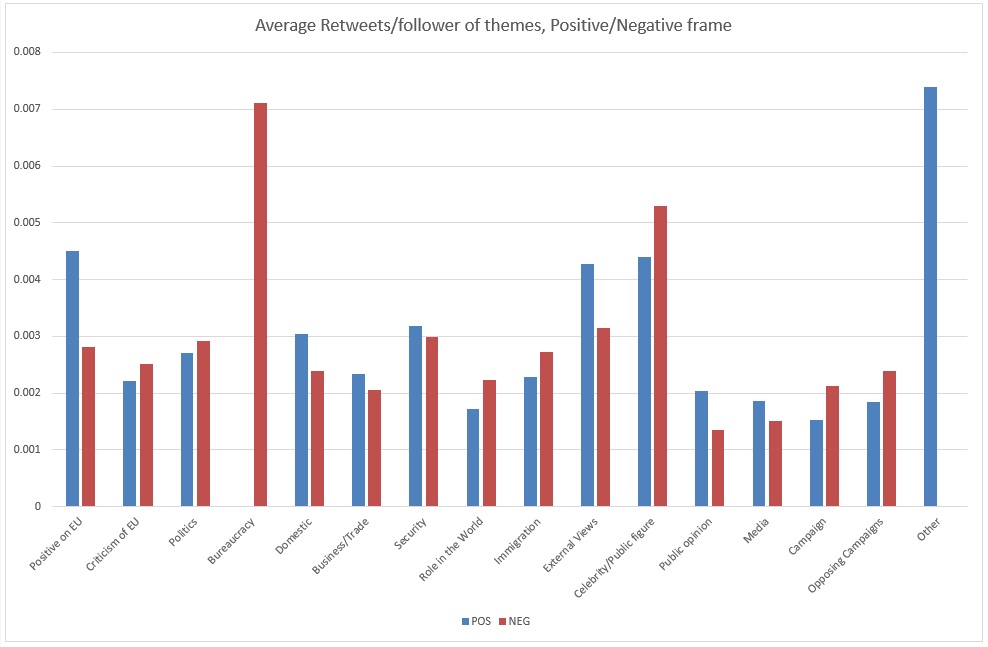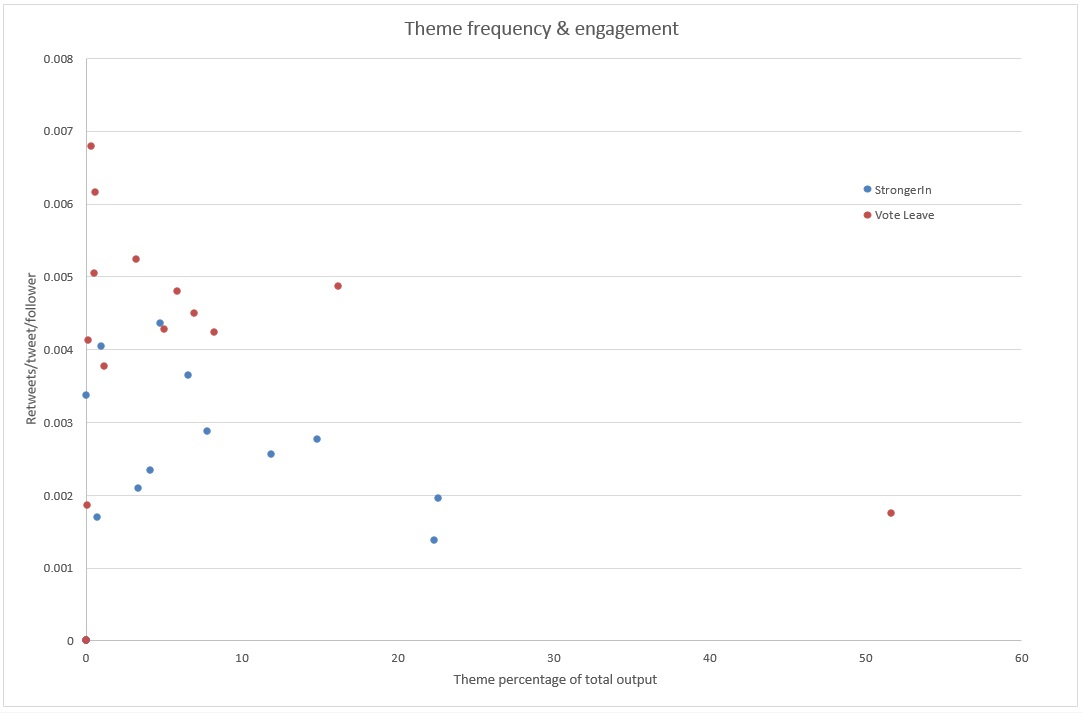The EU referendum has always had to deal with one significant issue: time. Until February this year, no one knew exactly when the vote would take place, other than before the end of 2017. As a consequence, campaign groups had to set up early and run on contingent plans that could be adjusted on the fly. Even when the 23 June date was settled – following the European Council deal – that still left a long time to fill.
All of which is a round-about sort of way of leading up to the observation that this past week has been a relatively quiet one for both camps. While Barack Obama’s visit at the weekend was big news for a couple of days, it had been long trailed, so the scope to make much more of it on social media was limited. In the absence of other big events, Remain and Leave seem to have hunkered down for now, waiting for a big push after the local elections next week.
The signs of this are found everywhere.
Firstly, the growth in followers has returned to its long-term norm, after the little spurt of the past fortnight. As we noted last week, this means that Leave.EU looks likely to remain the most popular official account for the rest of the campaign, something that the group has clearly noted and made much of, with its huge volume of tweets.
It’s also evident in the volume of activity more generally. Every group in our sample recorded a downturn in the number of tweets last week. Labour Leave have had only a perfunctory presence online since mid-March, but Grassroots Out also seem to have dried up over the past couple of weeks. Even Vote Leave only produced a third the volume of the previous week: while this might be argued to reflect the difficult news environment they had to deal with, it wasn’t matched by an equivalent increase in Stronger In’s volume, which suggests some other cause.
To some extent, this cooling of activity also reflects the relative absence of the news stories that have previously triggered much Twitter activity: slow-developing stories, or ones that generate outcry. This is visible in the engagement by followers with different frames: for the first time in a month, negative comments about other groups have not been the most retweeted content, at the same time that Leave.EU has also stopped producing such a large volume of such content. One consequence of this has been to reaffirm the generally positive framing that all three main groups have taken.
This week we see campaign related tweets dominating the themes of the two official groups, while LeaveEUOfficial focuses on external views. Among all groups there is an increase in tweets about external views on the referendum, a reaction to Obama’s voicing his views on the subject. Interestingly, for the first week so far, StrongerIn refrained from any tweets related to politics and we also see relatively few tweets on the benefits of the EU from the official remain campaign.


In this hiatus, it’s worth briefly considering some of the other aspects of the Twitter campaigning that can be observed. One question that has arisen is the extent to which different subjects are presented in different ways and how audiences respond to these. With that in mind, we’ve combined our existing coding for Stronger In, Vote Leave and Leave.EU to show how each of the themes is framed.
As might be expected, there is a lot of variation across frames: most obviously, no one has a good thing to say about bureaucracy! More broadly, the split is between themes that deal with substantive issues (where most content is about positive and negative arguments) and those that concern the practice of the campaigning (where references to groups are much more common).
Of more import is how each frame gets shared with audiences. As the following chart highlights, there are variations that will be of interest to both sides.
Re-combining the frames into a simpler positive-negative split, we can see that some themes have much higher retweet rates. However, of these the two highest peaks are for very small numbers of tweets, so aren’t reliable. Mentions of public figures are not very common, but it’s interesting to note that negative comments about then get shared more than positive ones; an online recreation of the potential backlash against Obama that has been noted elsewhere.
Among those themes with higher volumes, the strong showings for positive tweets on external views and positive EU themes indicates content that might be of use to each side. Leave have produced two-thirds of the first category, while Remain produce all of the latter (unsurprisingly). Surprisingly, there isn’t a mirrored effect in criticism of the EU, where negative tweets only slightly outperform positive ones. This leads to a further observation, namely that the content that is most common on the two official groups’ feeds is also among the least retweeted: perhaps both sides might need to reconsider what makes for successful content.

